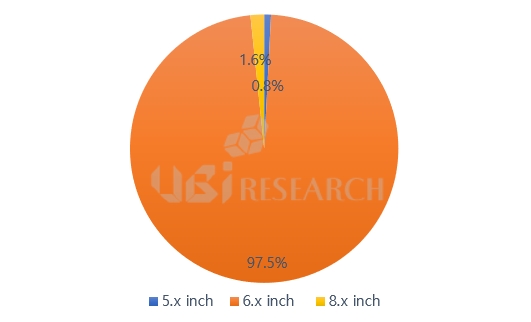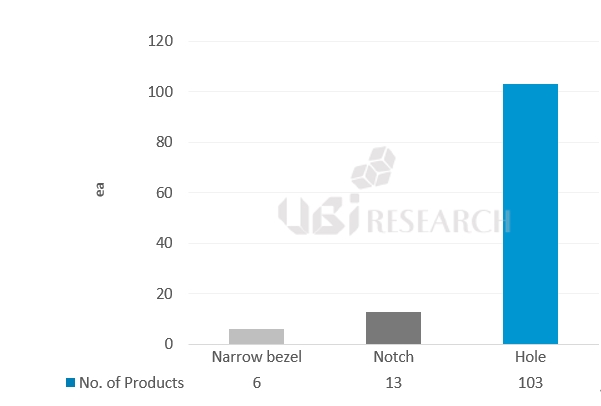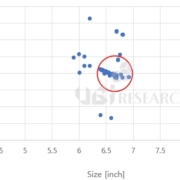97.5% of 6-inch OLED smartphones released in the first half of 2021,
Of the 122 OLED smartphones released in the first half of 2021, 119 6-inch smartphones were released, occupying an overwhelming share of 97.5%. Compared to the 6-inch smartphones released in 2018, which accounted for 78% of the total, it has become the mainstream of the smartphone market in just three years. One 5-inch model and two 8-inch models were released, and the 7-inch model was not released. The 5-inch model is Asus’ Zenfone8, the 8-inch model is Xiaomi’s Mi Mix Fold, and Huawei’s Mate X2.

By display design, hole model was released the most with 103, followed by notch model with 13 and narrow bezel model with 6. As in 2020, products with a home button were not released.

Looking at the distribution by resolution, 400~500ppi products were released the most with 64, accounting for 52.5% of the market share, 48 products with less than 400ppi and 10 products with more than 500ppi. The highest resolution product was Sony’s Xperia 1 II, which recorded 643 ppi.

In the display area (D.A), which is the ratio of the display to the size of the smartphone, products belonging to 80-90% accounted for 84.4%, 13.9% of those over 90% and less than 80% were not released. This is analyzed as a result of the disappearance of the home button and the continuous release of full-screen smartphones. The product with the highest D.A was 94.1%, which was occupied by Huawei’s Mate 40 Pro 4G, followed by Huawei’s Nova 8 pro in second place and Honor’s View40 in third place.
Finally, by country, China released the most with 104, followed by Korea with 12, Taiwan with 4, and Japan and Germany with 1 each.





